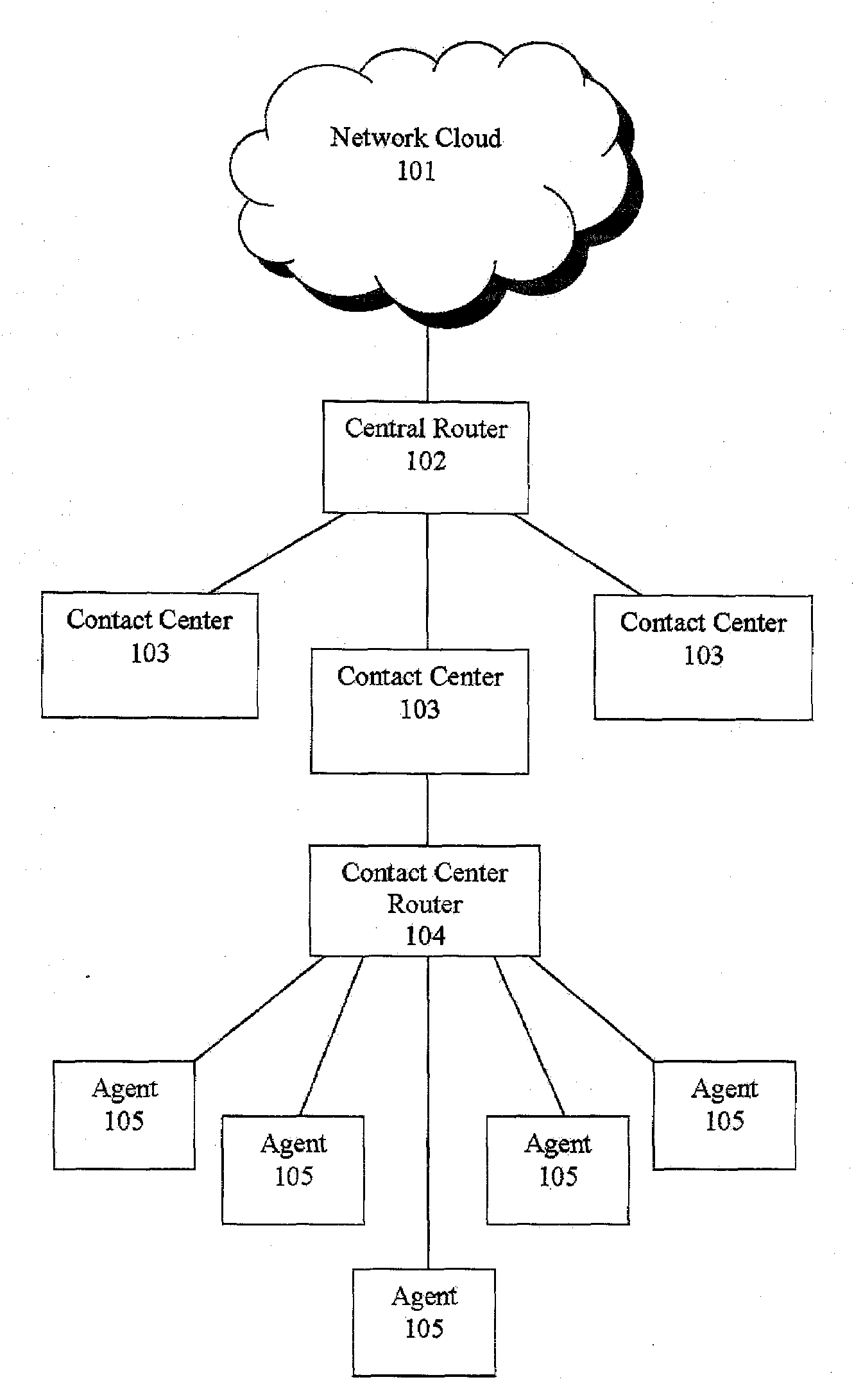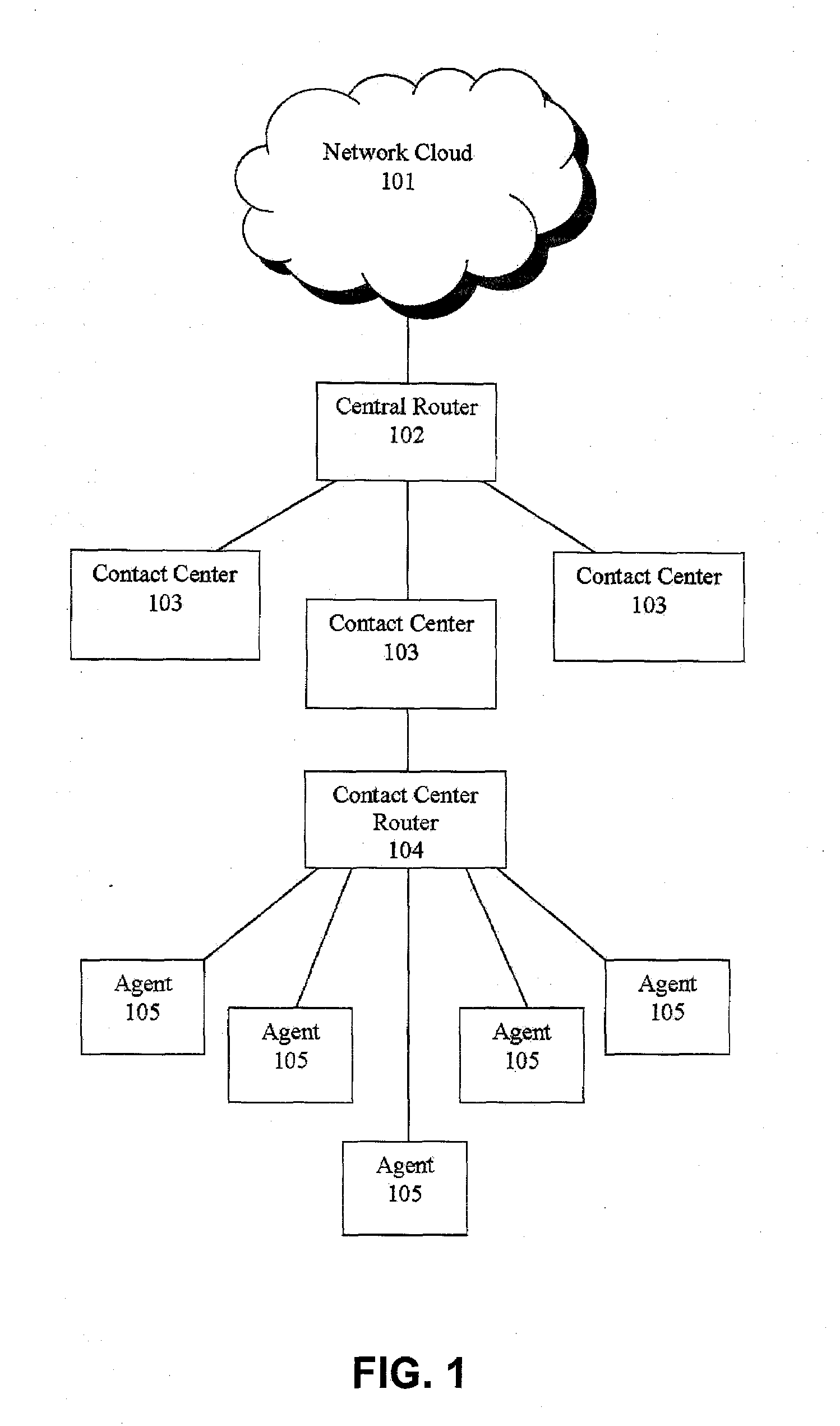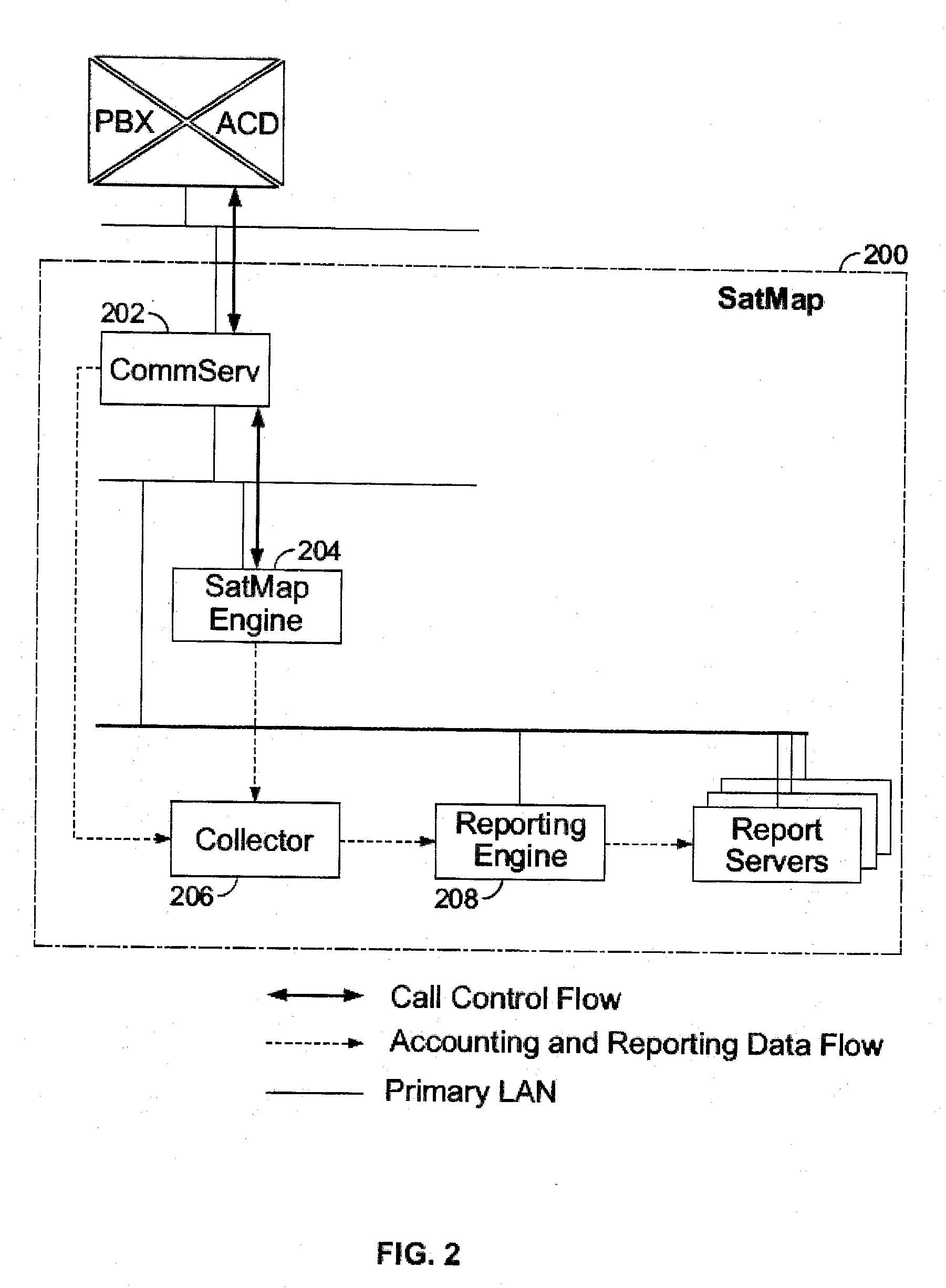[0024]In other examples, preferred callers (e.g., preferred account members,
platinum / gold service levels, and so on) may be used to multiply a matching
score by some “
platinum” factor to accelerate
connection time for such preferred callers, or to jump them within a queue of callers. In other examples, preferred callers may by included with different queues or pools for faster service.
[0025]Additionally, in one example, one or more hold thresholds may be adjustable and controlled by a user, e.g., in real-time via a displayed
user interface. For instance, a user may be able to adjust the allowed
hold time for a caller, or adjust the weighting of a cost function as used by the
system. Furthermore, in some examples, the system may analyze and display an estimated effect on one or more output performance variables of the system in response to adjusting or setting a hold threshold. For instance, increasing the time a caller may be held may increase a certain output variable (e.g., revenue), but decrease another output variable (e.g., customer satisfaction). Accordingly, some examples allow a user to adjust and view estimated performance effects based on the hold threshold(s).
[0026]Various performance based and / or
pattern matching algorithms for matching callers and agents based on available information regarding each may be utilized. In general,
contact center routings are potentially improved or optimized by routing contacts such that callers are matched with and connected to particular agents in a manner that increases the chance of an interaction that is deemed beneficial to a contact center (referred to in this application as an “optimal interaction”). Examples of optimal interactions include increasing sales, decreasing the duration of the contact (and hence the cost to the contact center), providing for an acceptable level of customer satisfaction, or any other interaction that a contact center may seek to control or improve. The exemplary systems and methods can improve the chance of an optimal interaction by, in general, grading agents on an optimal interaction, and matching a graded agent with a caller to increase the chance of the optimal interaction. Once matched, the caller can be connected to the graded agent. In a more advanced embodiment, the systems and methods can also be used to increase the chance of an optimal interaction by matching a caller to an agent using a computer model derived from data describing demographic, geographic, psychographic, past purchase behavior, personality characteristics (e.g., via a Myers-Brigg Type Indicator test or the like), time effects (e.g., data associated with different times of the day, week, month, etc.) or other
relevant information about a caller, together with data describing demographic, geographic, psychographic, personality characteristics, time effects, or historical performance about an agent.
[0029]Once agent data and caller data have been collected, this data may be passed to a computational system. The computational system then, in turn, uses this data in a
pattern matching algorithm to create a computer model that matches each agent with each caller and estimates the probable outcome of each matching along a number of optimal interactions, such as the generation of a sale, the duration of contact, or the likelihood of generating an interaction that a customer finds satisfying. As an example, the systems and methods may indicate that, by matching a caller to a female agent, the matching will increase the probability of a sale by 4 percent, reduce the duration of a contact by 9 percent, and increase the satisfaction of the caller with the interaction by 12 percent. Generally, the systems and methods will generate more complex predictions spanning multiple demographic and psychographic aspects of agents and callers. Exemplary systems and methods might conclude, for instance, that a caller if connected to a single, white, male, 25 year old, agent that has high speed internet in his home and enjoys comedic films will result in a 12 percent increase in the probability of a sale, a 7 percent increase in the duration of the contact, and a 2 percent decrease in the caller's satisfaction with the contact. In parallel, the exemplary systems and methods may also determine that the caller if connected to a married, black, female, 55 year old agent will result in a 4 percent increase in the probability of a sale, a 9 percent decrease in the duration of a contact, and a 9 percent increase in the caller's satisfaction with the contact.
[0030]Though this advanced embodiment preferably uses agent grades, demographic, psychographic, and other business-relevant data, along with caller demographic, psychographic, and other business-relevant data, other embodiments can eliminate one or more types or categories of caller or agent data to minimize the computing power or storage necessary to employ the exemplary methods and systems.
[0038]Exemplary methods and systems can also comprise connection rules to define when or how to connect agents that are matched to a caller. The connection rules can be as simple as instructing the method or system to connect a caller according to the best match among all available agents with that particular caller. In this manner, caller
hold time can be minimized. The connection rules can also be more involved, such as instructing the method or system to connect a caller only when a minimum threshold match exists between an available agent and a caller, or to allow a defined period of time to search for a minimum matching or the best available matching at that time. The connection rules can also purposefully keep certain agents available while a search takes place for a potentially better match.
 Login to View More
Login to View More  Login to View More
Login to View More 


